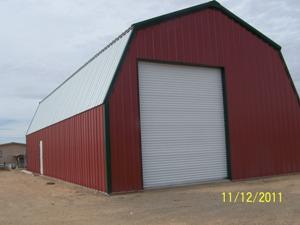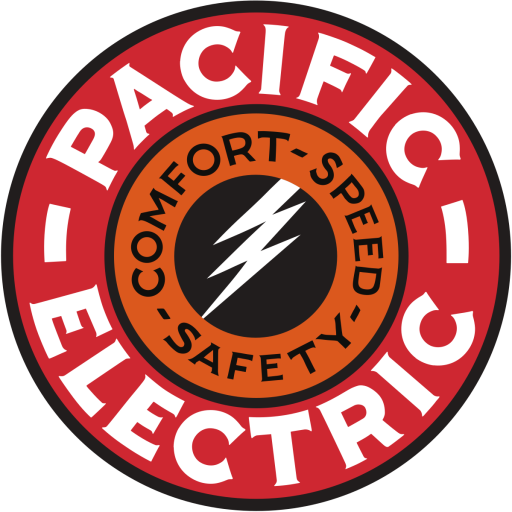Summary
Call me SteveG. I have been in love with electric railways for most of my life. Being from Los Angeles, we once had two great railways, the Pacific Electric and the Los Angeles Railway. I’m old but not old enough to have ridden either railway. I have only a faint memory of once seeing cars moving at PE’s 6th and Main Station and LARY cars on Broadway. When I lived in Chicago, I once waited a very long time at a crossing of the North Shore line for a train to pass not too long before the line closed.
So to me, once great electric railways can be enjoyed only as relics and pictures in books. It’s not fair. I suppose that’s why I’ve obsessed over wanting the railways back. But I don’t find relief with LA’s Metro Rail. I don’t find pleasure riding around town underground. Certainly not in an earthquake-prone area. I don’t find Metro useful, it doesn’t go to the Hollywood Bowl, for instance. The Pacific Electric did. And I don’t accept that autos are a great mass transit option in where only drivers get to enjoy the LA weather.
I have wanted to see if building a model of the past would provide some relief. Unfortunately, for various reasons, I always seemed to be moving around. No permanent place to create a train layout. As I neared retirement I finally put a stake in the ground, picked a permanent place and had a large 30’x60′ barn constructed. Due to its Gambrel roof, I could have two floors. The first floor holds equipment and documents from the 23 years I was self-employed. The second floor is reserved for a train layout.
Actually, a quarter of the barn was designed to hold our RV. As we don’t travel in the RV anymore, I recently sold the RV. This left a hole in the second floor. To fill the space, I found an adjustable mezzanine from Spain that fits the dimensions of the hole and comes close to matching the level of the existing second floor. With retirement, I set about thinking about what a layout could look like. This website tries to document the goal and development of the layout.
For more information about me, read on.
SteveG the early years, 1965-1976
I suppose I have finally come to agree with those who have described me as a jack of all trades, master of none. After high schools (2), I attended six colleges over 11 years. During colleges I seemed to also always be working, I can remember working at 12 companies.
After McDonald’s, I worked at a TV repair shop, a hardware store, for IBM installing engineering changes on mainframes, at Teledyne testing computer modules for the Cheyenne helicopter, at Micro Computer working on computers for large photoplotters (I believe the owner may have been the person who claimed to have invented the microcomputer, disputed by Intel), at Lago Calc testing and engineering desk calculators, at Century Data installing heads on large hard disks, at Pertec testing tape drive formatters, at Vector General writing software for standalone display systems, at Icom designing formatters for floppy drives and finally back at Pertec after they bought Icom.
During this time I also designed a prototype for the first computerized pipe organ combination action (building a small core memory from scratch) and obtained a patent on the concept. I also built a full-size combination action that could have been installed in an organ. And I built a pre-IBM microcomputer from scratch.
During this time the constant changes prevented having a place for a train layout. But after college my work life finally stablized when I formed a company with two friends to make floppy disk systems for Interdata minicomputers. Eventually I became the only hardware designer, the techical docs writer, the support software writer, supervisor of manufacturing and product tech support.
SteveG the self-employed years, 1976-1999
We designed and sold several floppy disk system models (for instance, David Taylor Naval Research used them), an IEEE 488 instrument interface (notably used to test sound emissions from lighting fixtures for NASA’s Vehicle Assembly Building), a solid state disk (GE jet engines used them to store test data), an EPROM storage module, a computer ID module (used in the air traffic control messaging system), a variety of clock calendars (used in places like NEXRAD weather radar computers and the Alexandria, VA traffic light control system) and an Interdata interface to the Vector General display.
But minicomputers were starting to fade. By luck, we were approached to design and build a controller for a new model of laser printer. My controller design was so fast that our printers were hardly ever slowed by page content. This began a really great era for the company. We designed and sold laser printer systems with a variety of print engines. The company was receiving orders faster than we could build them. I can remember nine different models sold over the next decade.
Maybe I take a little exception at being described as a jack of all trades, master of none. But I learned quickly the skills (hardware design, tech docs writing, software design and manufacturing) needed to create and sell a wide variety of products of our own creation. Occasionally I felt a product went from concept to ready-to-ship between when the order was placed by a customer and the truck pulled up to take it away.
But after 23 years, HP had finally caught up to our printer’s speed and with no new product ideas, I closed the company. Again, all this time I was so busy I had no time for trains.
SteveG the years of struggle, 1999-2016
Now back out in the real world, I found obtaining a job to be difficult. As a guy who was described as a mile wide and an inch deep, I could not compete with those an inch wide and a mile deep. This would make interviews for future jobs at times an embarrassment.
And I was back to moving around. But now I was storing and occasionally moving most everything from the company until some time in the future when I would have time to recycle and not just dispose of. We’re talking a few 200# printers, 1000# computers and mounds of records. During one interstate move, everything filled a large moving truck which became so overweight it had to avoid weigh stations.
During this era I can recall having 11 jobs, none lasting much more than a year. In there somewhere was also a really embarrassing interview with Microsoft and a bout with pneumonia that almost killed me.
For my next to last job before retiring, which at the time I thought was going to be the last, I bought a 1.77-acre lot in the sticks, placed a new house and made plans to move the company stuff to its final resting place. I call this the Shady Rest Hotel event. Recall from the TV show Petticoat Junction that the Shady Rest was built far from any town because that is where the lumber fell off the train.
I was not going to move the company stuff anymore and this is where I would try to build a train layout. To do so, I needed a large structure, a barn. The biggest I could afford was 30’x60′ with a Gambrel roof. This allowed for a second floor. The company stuff would go on the ground floor and the train on the second. And as we had a smallish RV, 1/4 of the barn was set aside for it, hence the big rollup door seen in the photo below.

A possibly amusing note about the barn has to do with the RV. The RV was called a 27′. The barn is built from four 30’x15′ sections making 30’x60′. The second floor would normally fill the inside of the barn. The builder of the barn actually asked if I wanted the second floor high enough so the RV would fit underneath. To clear the aerials, the overall barn height would exceed County limits. It would have looked like a skyscraper. So I had the design modified so that there was a clear area 30′ in from the door. At 30′ in, halfway down the barn, there is a large I-beam supporting the second floor. And, you may have guessed, the RV was actually longer than 27′. Only because the RV had a sloped front could its nose slide under the I-beam and the rear clear the door. Measure twice, cut once? Maybe measure at least once.
Could I now start on a layout? Oh, no. My job ended and I had to take another a 1,000 miles away. But I finally started making plans for a layout, just a little hampered by the distance away.
SteveG the retirement years, 2016-present
Eventually, I retired. Now I could pursue my long-time desire for a train layout. But what kind of a layout? First, a little about the barn that will hold it.

Leave a comment